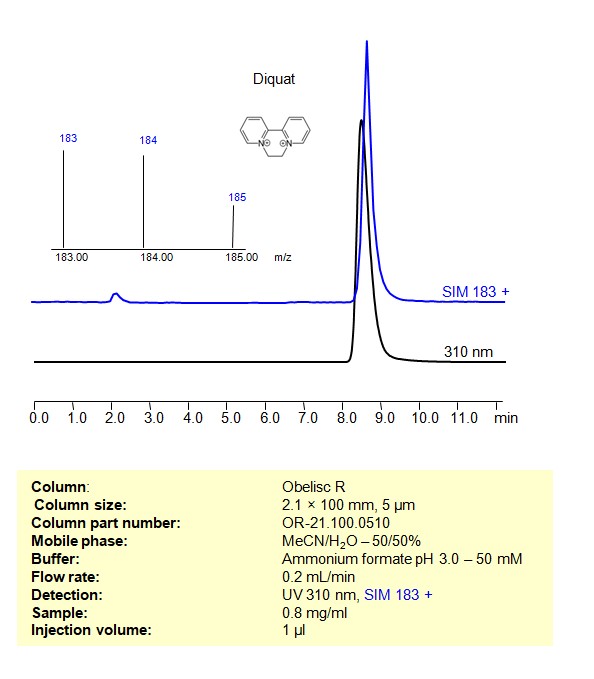HPLC Method for Analysis of Diquat on Obelisc R by SIELC Technologies
High Performance Liquid Chromatography (HPLC) Method for Analysis of Diquat
Diquat is a non-selective contact herbicide used in agriculture and landscaping. It’s known for its effectiveness in controlling a wide range of weeds and plants.
diquat is a potent herbicide used for controlling a broad spectrum of weeds and as a desiccant in agriculture. While effective, its toxicity and environmental impact necessitate careful handling and adherence to regulatory guidelines.
Diquat can be retained and analyzed on a Obelisc R mixed-mode stationary phase column using an isocratic analytical method with a simple mobile phase of water, Acetonitrile (MeCN), and a ammonium format as a buffer. This analysis method can be detected an Evaporative Light Scattering Detector (ELSD), or any other evaporative detection method (CAD, ESI-MS)
| Column | Obelisc R, 2.1 x 100 mm, 5 µm, 100 A, dual ended |
| Mobile Phase | MeCN – 50%, |
| Buffer | Ammonium Formate pH 3.0-50 mM |
| Flow Rate | 0.2 ml/min |
| Detection | SIM 183 +, UV 310 nm |
| Spray Voltage: | 1.5 kV |
| Nebulizing gas: | 1.5 L/min |
| Drying gas: | 15 L/min |
| DL temp: | 250 ˚C |
| Heat Block: | 400 ˚C |
| Class of Compounds | Pesticides |
| Analyzing Compounds | Diquat |
Application Column
Obelisc R
Column Diameter: 2.1 mm
Column Length: 100 mm
Particle Size: 5 µm
Pore Size: 100 A
Column options: dual ended






